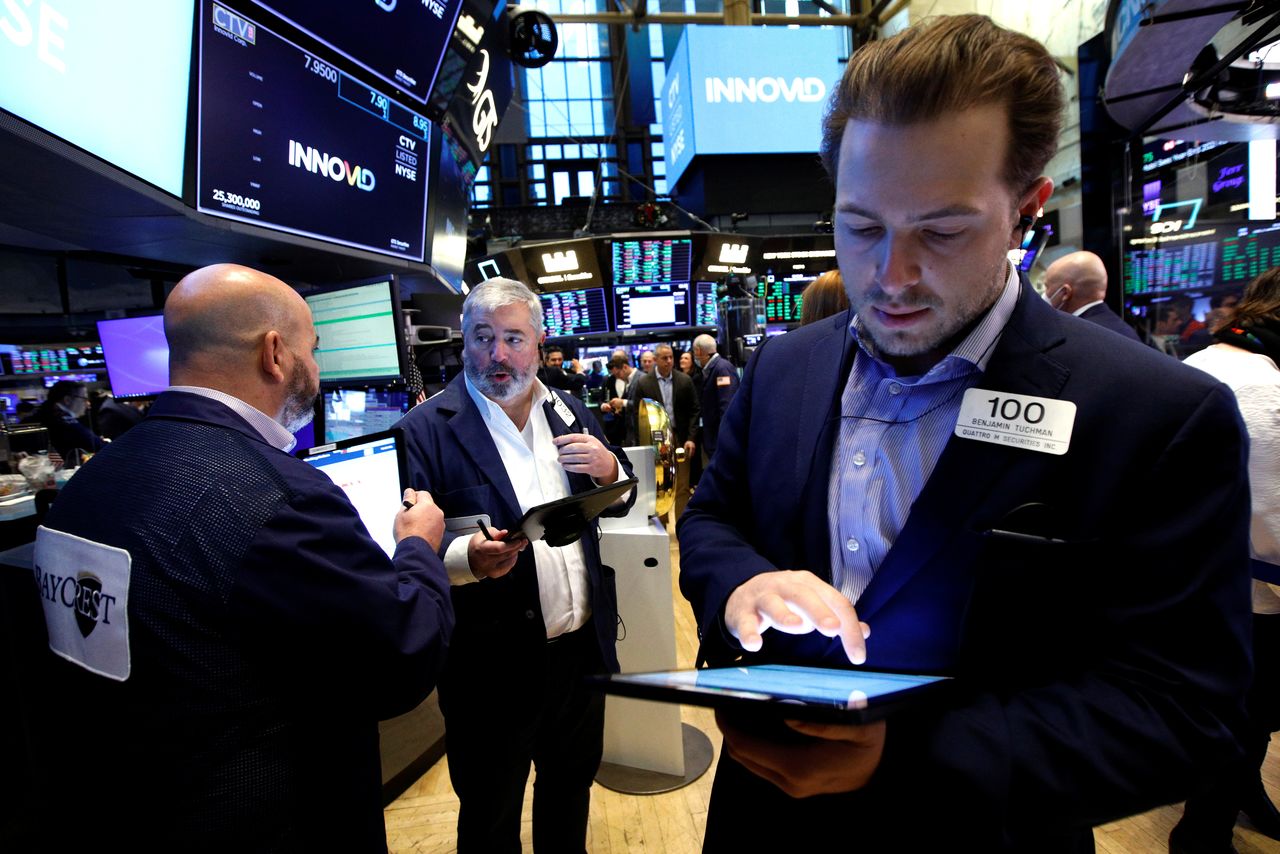Investors track COVID case counts, watch key market levels as Omicron fears grow
Newsfrom Japan
- English
- 日本語
- 简体字
- 繁體字
- Français
- Español
- العربية
- Русский

Traders work on the floor of the New York Stock Exchange (NYSE) in New York City, U.S., December 1, 2021. REUTERS/Brendan McDermid
By Lewis Krauskopf
NEW YORK (Reuters) - The emergence of Omicron is fueling uncertainty in markets, as investors await information about the heavily mutated coronavirus variant and gauge how badly it could damage the global recovery.
Early indications suggest Omicron may be markedly more contagious than previous variants, though researchers are still seeking to understand its impact.
In the meantime, volatility across asset markets has soared, with a recent hawkish turn from the Federal Reserve contributing to the gyrations.
Here are some factors investors are watching to discern Omicron’s impact on the economy and asset prices.
VIEW OF THE VARIANT
Among the key factors that could sway market reaction to Omicron are whether it causes more severe disease than previous variants, if it becomes the dominant strain across the world and how responsive it is to existing vaccines and therapies.
Many are closely watching South Africa, where officials said Omicron is quickly becoming the dominant variant, accounting for 74% of the 249 virus genomes sequenced in November.
Government response is also key. U.S. President Joe Biden said on Thursday that his administration's plan to fight COVID-19 does not include shutdowns.
Graphic: Omicron variant map - https://graphics.reuters.com/USA-VARIANT/zdvxonlxxpx/Omicron.jpg
ECONOMIC ACTIVITY
While the impact of Omicron may take time to show up in traditional economic indicators, some investors are counting on less-conventional measures for a view of activity.
One indicator of mobility watched by TD Securities are requests for driving directions using Apple Maps, which have recently ticked lower.
Other data include checkpoints tracked by the Transportation Security Administration, restaurant reservations and hotel occupancies.
Graphic: Apple Maps driving directions requests - https://graphics.reuters.com/USA-STOCKS/MOBILITY/gkplglglavb/chart.png
Many on Wall Street have also tried to map various courses the pandemic might take and their possible impact on growth.
A "downside" scenario outlined by Goldman Sachs, in which a large wave of infections leads to lockdowns, could slow global growth to 2% in the first quarter of 2022, 2.5 percentage points below the bank's current forecast.
Others said Omicron could hasten the end of the pandemic.
"If a less severe and more transmissible virus quickly crowds out more severe variants, could the Omicron variant be a catalyst to transform a deadly pandemic into something more similar to seasonal flu?" JPMorgan strategists wrote.
SENTIMENT
Omicron, as well as the possibility of a more aggressive Fed, is weighing on sentiment among retail investors.
The percentage of retail investors with a bullish view has tumbled to 27%, compared with 48% three weeks earlier, according to the latest survey from the American Association of Individual Investors.
Bearish sentiment stood at 42.4%, its highest level in more than a year.
Uncertainty about Omicron "leads to many investors fearing the worst-case outcome," wrote Keith Lerner, co-chief investment officer at Truist Advisory Services.
Some retail investors, however, have capitalized on recent stock weakness.
Retail net purchases of U.S. equities hit a record high on Tuesday at $2.2 billion after reaching $2.1 billion in Friday's sell-off, data from Vanda Research showed.
Graphic: Bearish investor sentiment rising - https://graphics.reuters.com/USA-STOCKS/INDICATORS/gdpzymqrbvw/chart.png
VOLATILITY
Concerns over Omicron and the Fed are stirring volatility across asset markets.
The Cboe Market Volatility index, known as Wall Street's "fear gauge," topped 30 on Wednesday for the first time since March amid several days of swings in stock prices.
Moves in the bond market have also picked up in recent weeks, fueled in part by uncertainty over Fed policy. The ICE BofA MOVE Index, which measures expectations of volatility in the bond market, is near its highest levels since March 2020.
Currency market volatility, as measured by the Deutsche Bank Currency Volatility Index, is near its highest level since March 2021.
Graphic: Volatility view - https://graphics.reuters.com/USA-STOCKS/VOLATILITY/mopanqnjbva/chart.png
SAFE HAVENS
Market fluctuations have sent investors into so-called haven assets such as the Japanese yen, Swiss franc and U.S. government bonds. Treasury yields, which move inversely to prices, have fallen in recent days despite hawkish signals from the Fed that would normally cause them to rally.
More strength in these assets could indicate that uncertainty continues to plague markets.
Graphic: Safe haven trades - https://fingfx.thomsonreuters.com/gfx/mkt/jnpweaeadpw/Pasted%20image%201638395226831.png
LOOKING AT LEVELS
Investors are also watching important technical levels to assess the extent of damage in the market.
The Dow Jones Industrial Average on Wednesday closed below its 200-day moving average for the first time since July 2020, a potentially bearish sign.
The benchmark S&P 500 remains above its 200-day level, but closed below its 50-day moving average on Wednesday for the first time since mid-October.
Graphic: S&P 500 and key technical levels - https://graphics.reuters.com/USA-STOCKS/INDICATORS/zgvomnmolvd/chart.png
(Reporting by Lewis Krauskopf; Editing by Ira Iosebashvili and Dan Grebler)
(c) Copyright Thomson Reuters 2021. Click For Restrictions -
https://agency.reuters.com/en/copyright.html